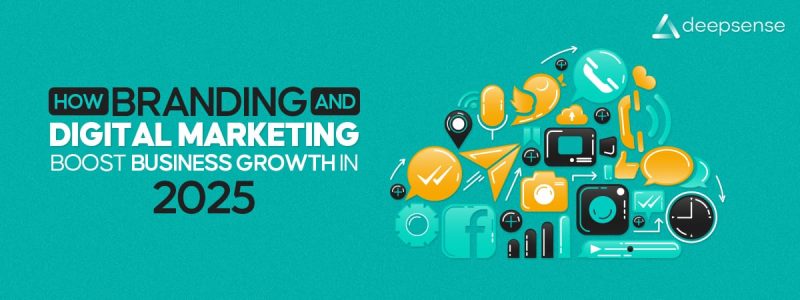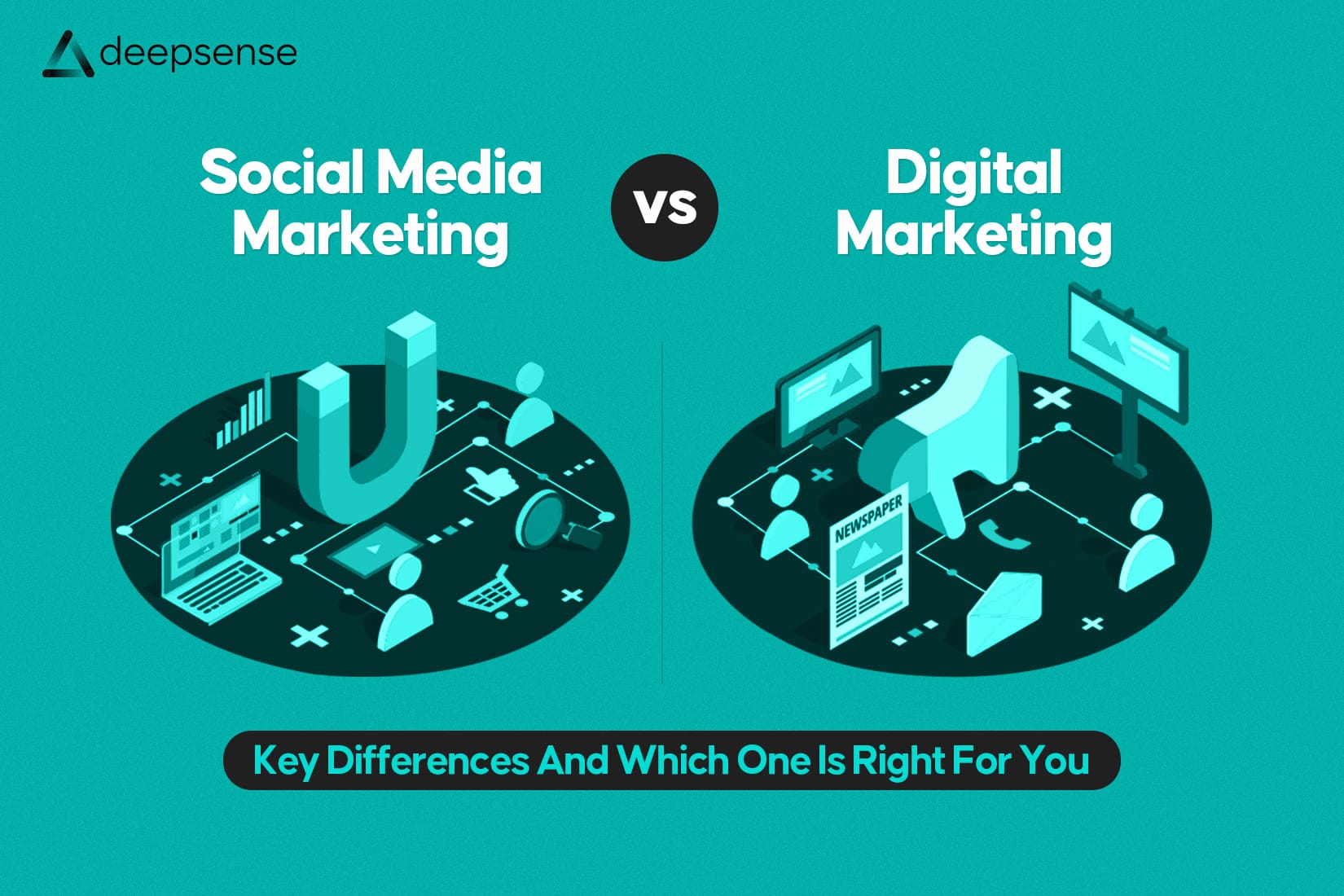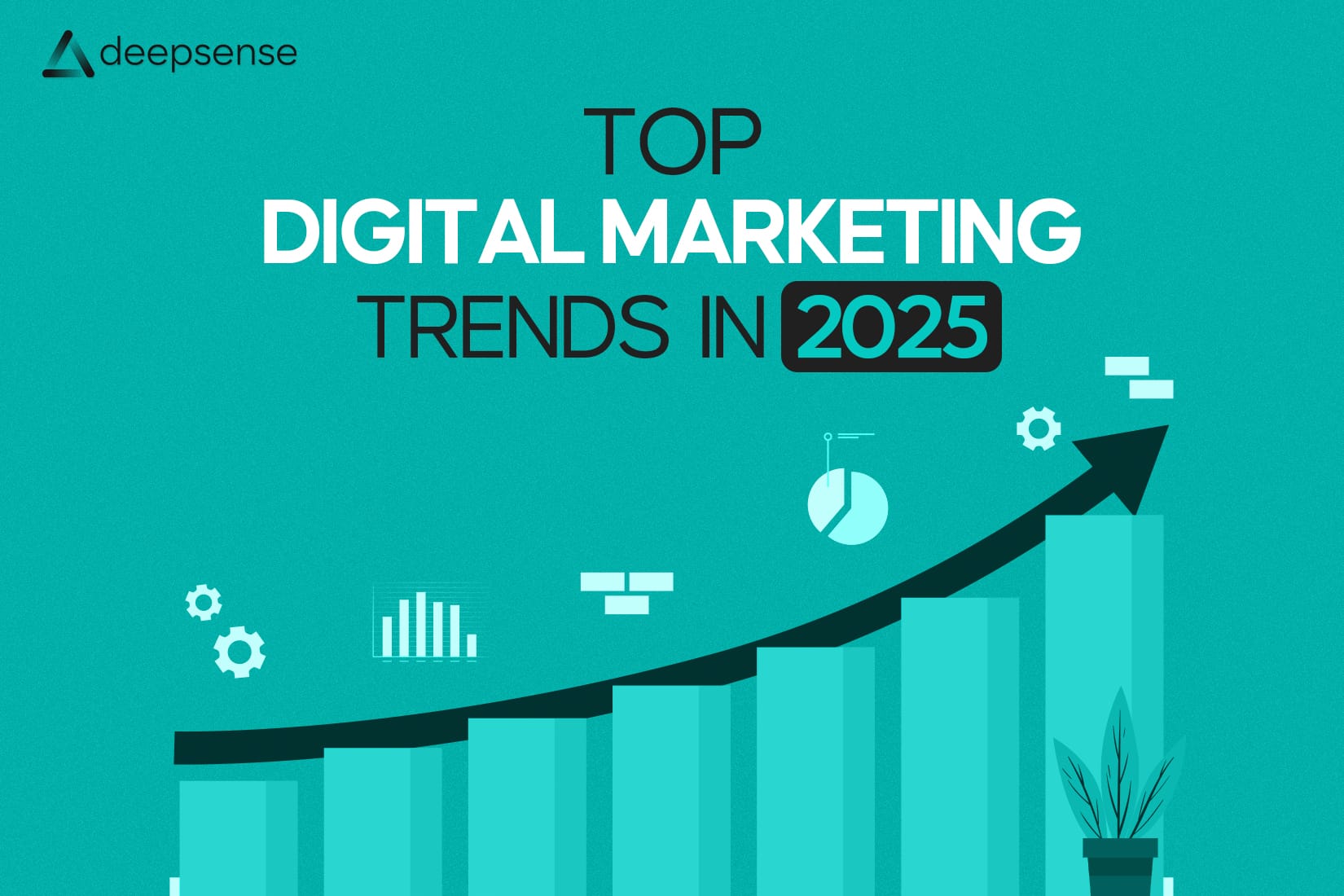If 2020 taught us resilience, and 2023 showed us the true potential of AI, then 2025 is the year of precision, personalization, and performance. The digital world is no longer just “online marketing”, it’s an ecosystem where consumer behavior, technology, and storytelling collide to create brand experiences.
Whether you’re a startup founder, a marketer, or a curious entrepreneur, you’ve probably asked yourself:
“What’s next in digital marketing?”
Well, let’s take a stroll into the near future and explore the Top Digital Marketing Trends in 2025, explained in a simple, conversational way (without the boring jargon).
1. Hyper-Personalization Powered by AI
Gone are the days of “Hello, [First Name].” In 2025, personalization is deeper than ever before.
AI tools are now analyzing micro-moments of a customer’s journey, what they click, where they scroll, what mood they’re in (yes, even that), to deliver messages that feel almost human.
Example: Imagine opening your food app after a long workday and being greeted with “Hey, looks like you’ve had a long day. Want your usual chicken biryani with extra spice?” That’s not creepy anymore, it’s expected.
Takeaway: Brands that invest in AI-driven personalization will earn more loyalty and higher conversions.
2. Short-Form Video + Interactive Storytelling
If content is king, video is the empire. But in 2025, static videos aren’t enough.
Interactive reels, shoppable TikToks, and immersive Instagram Stories are taking center stage. Viewers don’t just want to watch, they want to engage, swipe, vote, and buy right there.
Example: A beauty brand lets you test lip shades through AR filters and purchase them instantly within the video.
Takeaway: Keep videos short, fun, interactive, and commerce-ready.
3. Voice Search & Conversational Marketing
Typing is out. Talking is in. With Alexa, Siri, and ChatGPT-like assistants everywhere, consumers are speaking their queries more than ever.
By 2025, over 60% of searches will be voice-based.
Example: Instead of typing “best pizza near me,” people will ask, “Alexa, where can I get a cheesy pepperoni pizza delivered within 20 minutes?”
Takeaway: Brands need to optimize for natural language keywords and ensure their content is voice-search friendly.
4. Rise of Decentralized Social Media
Remember when we thought Facebook, Instagram, and X (Twitter) ruled forever? Well, 2025 is witnessing the boom of decentralized platforms like Bluesky and Mastodon, where users control their data and communities thrive without algorithms dictating what they see.
Takeaway: Marketers must adapt to these new ecosystems where authenticity and community-led content win over polished ads.
5. Social Commerce Goes Mainstream
Shopping and scrolling are now the same thing. By 2025, social commerce is predicted to hit $2 trillion globally.
Example: You’re watching a fitness influencer on Instagram and, without leaving the app, you buy the protein shake they’re sipping.
Takeaway: Every brand must rethink social media not just as an engagement tool but as a full-fledged sales channel.
6. Sustainability & Purpose-Driven Marketing
Gen Z and Gen Alpha don’t just want good products; they want responsible brands.
They’ll ask:
- Is this eco-friendly?
- Is the brand transparent?
- Does this business give back to society?
Example: Clothing brands now tag products with carbon footprint data so shoppers know the environmental impact of their purchase.
Takeaway: Purpose-driven storytelling isn’t optional, it’s a brand necessity in 2025.
7. Predictive Analytics for Smarter Campaigns
Imagine launching a campaign and already knowing how your audience will respond. Sounds futuristic? That’s 2025.
Predictive analytics uses AI and big data to forecast customer behavior, what they’ll buy, when they’ll buy, and why they’ll buy.
Takeaway: Brands that use predictive tools will waste less ad spend and maximize ROI.
8. AR & VR = The New Playground
Metaverse may not have boomed as fast as we thought, but augmented reality (AR) and virtual reality (VR) are thriving.
Example: IKEA lets you place 3D furniture in your living room before buying. Fashion brands let you “try on” clothes digitally.
Takeaway: If your product is visual, AR/VR can create an immersive buying experience your customers will never forget.
9. First-Party Data & Privacy-First Marketing
With cookies crumbling and privacy laws tightening, first-party data is king.
Brands are now building direct relationships with consumers via loyalty programs, newsletters, and community platforms instead of relying on third-party trackers.
Takeaway: Respect privacy, build trust, and collect data ethically. Customers will reward you with loyalty.
10. Human + AI Collaboration
Finally, the most powerful trend of 2025: humans and AI working together.
AI can write content, design ads, and predict customer behavior, but it lacks one thing, human creativity, empathy, and cultural nuance.
The winning brands are those blending AI efficiency with human storytelling.
Example: A campaign where AI predicts trending memes, but human marketers give it the humor and soul.
Takeaway: Don’t fear AI. Leverage it as a creative partner.
Final Thoughts
2025 isn’t about chasing every shiny tool. It’s about building authentic connections, staying agile, and blending creativity with technology.
- Brands that:
Personalize smartly
- Invest in immersive content
- Respect privacy
- Stand for a purpose
…will not just survive but thrive in this digital-first world.
So, whether you’re a marketer, a business owner, or a curious learner, 2025 is your playground. Adapt fast, stay curious, and keep experimenting.
Because in digital marketing, the only trend that never goes out of style is evolution.
FAQs
1. What are the biggest digital marketing trends in 2025?
The major trends include AI-driven personalization, voice search optimization, video-first content, AR/VR experiences, conversational marketing, social commerce, privacy-first advertising, micro-influencers, sustainability-driven branding, and first-party data strategies.
2. Why is AI so important for digital marketing in 2025?
AI enables hyper-personalization, predictive analytics, automated content creation, and smarter ad targeting, making marketing campaigns more efficient, cost-effective, and impactful.
3. How does voice search affect SEO strategies in 2025?
With the rise of smart speakers and AI assistants, people search using conversational queries. Marketers must optimize for long-tail, natural-language keywords and FAQ-style content.
4. Is video content still trending in 2025?
Yes, video remains dominant, especially short-form (TikTok, Reels, Shorts), interactive videos, and live streaming. It’s the most engaging and shareable form of content.
5. What role does AR/VR play in digital marketing now?
AR/VR helps brands offer immersive shopping experiences, virtual product trials, and interactive brand storytelling, bridging the gap between online and offline experiences.
6. How is social commerce growing in 2025?
Social platforms are turning into mini e-commerce hubs. With features like in-app checkout, live shopping, and shoppable posts, customers are buying directly within social platforms.
7. Why is privacy-first advertising a big deal in 2025?
With cookies being phased out and data regulations tightening, brands must rely on first-party data, transparent data collection, and ethical marketing to maintain customer trust.
8. Are influencers still effective in 2025?
Yes, but the focus is shifting to micro and nano-influencers who drive higher engagement and authenticity compared to celebrity influencers.
9. How does sustainability impact digital marketing trends?
Consumers now prefer brands that showcase eco-friendly practices, authenticity, and social responsibility. Marketing in 2025 integrates these values to build trust and loyalty.
10. What should businesses do to stay ahead of digital marketing trends in 2025?
Stay adaptable, invest in AI and data-driven tools, create authentic and engaging content, test emerging platforms, and always keep customer experience at the center.











